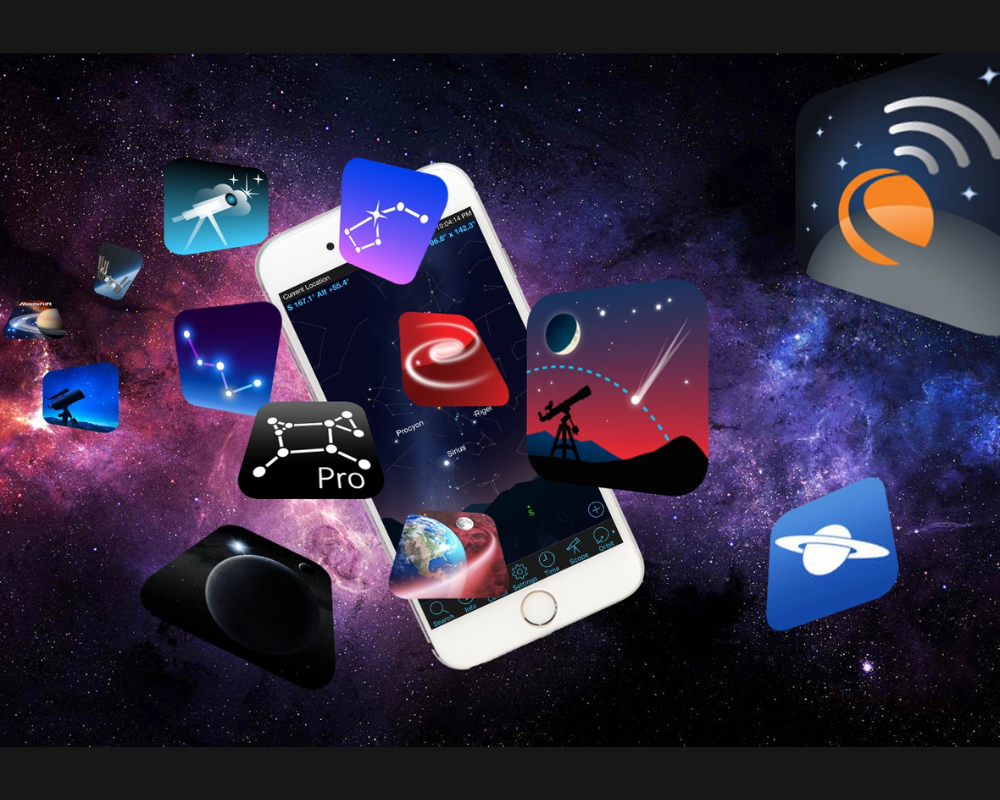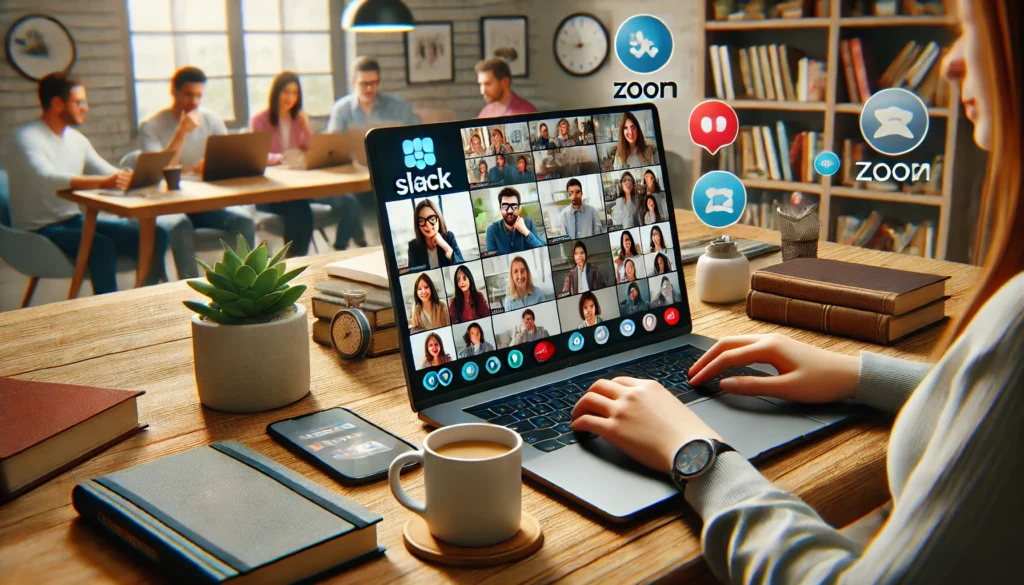Exploring the Universe with Technology
Free Science and Astronomy Apps let you explore the mysteries of the universe using just your smartphone, turning the night sky into an interactive and accessible spectacle.
These innovative tools bring the cosmos to your fingertips, making it easy to identify stars, track planets, and uncover celestial phenomena in real-time.
These apps combine advanced technology, intuitive design, and powerful features to provide users with the tools they need to explore the cosmos in unprecedented ways.
Whether you’re searching for constellations, tracking satellites, or observing planetary movements, these apps simplify complex astronomy concepts for users of all levels.
For students, these apps are excellent tools for enhancing their understanding of space science through hands-on interaction.
Teachers can integrate them into lessons, offering visual aids that captivate students’ attention and make learning engaging.
On the other hand, astronomy enthusiasts can delve deeper into their passion, discovering celestial phenomena with just a few taps.
One standout feature of these apps is the use of augmented reality (AR).
By simply pointing your smartphone at the sky, you can instantly identify stars, constellations, and planets.
Many of these apps also work offline, ensuring access to critical information in remote areas away from light pollution.
Additionally, interactive simulations and real-time tracking of celestial events bring the vast universe closer to home.
These features empower users to follow meteor showers, eclipses, or satellite trajectories, creating unforgettable stargazing experiences.
With Free Science and Astronomy Apps, the wonders of the universe are no longer out of reach. Dive into the stars, expand your knowledge, and let curiosity guide you through the cosmos. The journey begins with just a download!
The Role of Technology in Education
Modern technology, increasingly present in our daily lives, has revolutionized how we learn and interact with the world.
In education, it plays a fundamental role in making knowledge more accessible and engaging.
Digital tools, such as astronomy apps, use stunning visualizations, real-time simulations, and precise scientific data to connect us to the universe.
These resources not only help us understand the sky above but also develop critical skills like analytical thinking and scientific curiosity.
Why Is Studying Science and Astronomy Essential?
Studying science and astronomy goes beyond simply observing stars or learning about planets.
These fields are fundamental to understanding our place in the universe and the processes that shape the world we live in.
From climate prediction to space exploration, astronomy and related sciences help us uncover the natural laws governing everything around us.
Additionally, exploring the cosmos inspires deep questions and encourages creative problem-solving, fostering a passion for discovery.
How Do Science and Astronomy Apps Facilitate Learning?
Today, thanks to technological advancements, anyone with a smartphone can access information that was once reserved for scientists.
Apps leveraging augmented reality, interactive simulations, and real-time star maps make it possible to identify stars, track satellites, and plan observations of astronomical events—all in a simple and intuitive way.
These tools expand individual learning horizons and create opportunities for parents and teachers to integrate science into children’s daily lives in a practical and fun manner.
Why Explore Science and Astronomy Apps?
Astronomy has always sparked fascination.
Now, with technological advancements, you can access incredible tools directly from your smartphone.
Science and astronomy apps help you identify stars, understand celestial phenomena, and even plan observations of rare events like eclipses and meteor showers.
They are more than just fun—they’re educational platforms that encourage critical thinking and active learning.
Whether you’re a beginner or an experienced observer, these apps offer something valuable.
Let’s explore their detailed features and discover how each can enrich your astronomical experience.
What This Article Offers
In this article, we will explore 10 Free Science and Astronomy Apps that promise to revolutionize your way of seeing the universe.
Each combines technology, interactivity, and scientific precision to provide unique and educational experiences.
Additionally, we’ll discuss how digital astronomy has brought science closer to people of all ages, promoting a greater understanding of the world and the cosmos.
At the end, we’ll present a detailed comparative table to help you choose the app that best suits your needs and interests.
Are you ready to embark on this cosmic journey?
The universe awaits you, and with these apps, the sky is no longer the limit!
The Top 10 Free Science and Astronomy Apps
1. SkyView Lite: Your Portable Observatory
SkyView Lite is widely recognized for its intuitive interface and effective use of augmented reality (AR). It transforms your camera into a window to the night sky.
- Interface: Minimalist toolbar with AR and night mode options.
- Key Feature: Works offline, ideal for remote locations.
- Comparison with Paid Version: The premium version, SkyView Pro, includes advanced constellations and ad-free use.
- Pros: Lightweight and functional on basic devices.
- Cons: AR-intensive, which can drain the battery quickly.
2. Star Walk 2 Free: An Immersive Celestial Guide
Known for its high-quality 3D interface and smooth animations, Star Walk 2 Free offers a visual journey through the sky.
- Interface: Modern visuals with smooth transitions.
- Key Feature: Cultural and scientific stories about constellations.
- Comparison with Paid Version: The premium version removes ads and adds detailed information about less-known objects.
- Pros: Optimized for mid-range devices.
- Cons: Ads can disrupt the experience.
3. NASA App: Science in Your Pocket
The NASA App stands out with its massive database of updated information and segmented interface featuring categories like “Image of the Day,” “Videos,” and “Space Missions.”
- Interface: Vertical menus for easy navigation through live videos, HD images, and interactive simulations.
- Key Feature: Live feeds from the International Space Station (ISS).
- Comparison: More educational than gamified apps like Space Science Investigations.
- Pros: Extensive HD image library.
- Cons: The vast amount of information can overwhelm beginners.
4. Solar System Scope: A Window to the Solar System
With detailed 3D simulations, Solar System Scope lets you explore planets, moons, and orbits with precision.
- Interface: Panoramic solar system view with adjustable zoom and perspective.
- Key Feature: Historical simulations of the solar system at different times.
- Comparison with Paid Version: The premium version includes more detailed planetary textures.
- Pros: Realistic visuals ideal for educational use.
- Cons: Can lag on basic processors.
5. Stellarium Mobile: The Planetarium in Your Pocket
Known for its scientific accuracy, Stellarium Mobile is a favorite among amateur and professional astronomers.
- Interface: Detailed celestial map adjustable by date, time, and location.
- Key Feature: Offline mode for remote areas.
- Comparison with Paid Version: Advanced features like satellite tracking are premium.
- Pros: Extensive catalog of celestial objects.
- Cons: Can be confusing for beginners.
6. Heavens-Above: Your Satellite Tracker
Heavens-Above specializes in satellite tracking and celestial event predictions.
- Interface: Functional design with location-based tracking maps.
- Key Feature: GPS synchronization for precise tracking.
- Comparison: Offers accuracy comparable to paid apps like Satellite Tracker Pro.
- Pros: Ideal for astrophotography.
- Cons: Less visually appealing interface.
7. Sky Map: Simplicity and Functionality
Originally developed by Google, Sky Map is a straightforward app for identifying celestial objects in real-time.
- Interface: Minimalist celestial map responsive to device orientation.
- Key Feature: Fully offline functionality.
- Comparison: Simpler but less robust than advanced apps like SkySafari Pro.
- Pros: Efficient on older devices.
- Cons: Lacks advanced features like event notifications.
8. Star Chart: Visual and Interactive
Star Chart combines impressive graphics with augmented reality for a unique experience.
- Interface: 360-degree virtual horizon exploration.
- Key Feature: AR synchronization for enhanced interactivity.
- Comparison with Paid Version: The premium version includes virtual solar system tours.
- Pros: Stunning visuals.
- Cons: Limited updates.
9. Cosmic Watch: Science Meets Art
Cosmic Watch merges astronomy with artistic design, offering a real-time astronomical clock.
- Interface: Interactive 3D globe displaying celestial and terrestrial positions.
- Key Feature: Visualization of lunar cycles and equinoxes.
- Comparison: Advanced features are paid.
- Pros: Great for educational purposes.
- Cons: Limited free functionality.
10. Astroviewer: Simplicity for Local Events
Astroviewer focuses on predicting local astronomical events like eclipses and planetary alignments.
- Interface: Simple celestial maps focused on event planning.
- Key Feature: Ideal for observatories and educational settings.
- Comparison: Less interactive than apps like SkyView Lite.
- Pros: Reliable event predictions.
- Cons: Outdated interface.
Comparative Table of the 10 Free Science and Astronomy Apps
| App | Advantages | Disadvantages | Key Feature |
|---|---|---|---|
| SkyView Lite | Easy to use, offline AR | Requires good camera | Functional offline. |
| Star Walk 2 Free | Immersive design, stories | Ads can disrupt navigation | 3D interface with smooth animations. |
| NASA App | Official content, live videos | Complex navigation for some | Extensive HD image library. |
| Solar System Scope | Realistic visuals, 3D view | Demands higher processing | Historical solar system simulations. |
| Stellarium Mobile | Comprehensive catalog | Confusing for beginners | High scientific precision. |
| Heavens-Above | Precise tracking | Simple visual design | GPS-based satellite tracking. |
| Sky Map | Lightweight, works offline | Limited features | Minimalist, beginner-friendly. |
| Star Chart | Stunning visuals, AR | Limited updates | 360-degree interactive horizon. |
| Cosmic Watch | Educational, artistic design | Limited free functions | 3D celestial visualization. |
| Astroviewer | Reliable event predictions | Outdated interface | Ideal for local event planning. |
How to Choose the Right App for You?
1. Main Objective
If you’re looking for an interactive and immersive experience, apps like SkyView Lite and Star Walk 2 Free are ideal choices.
Both offer augmented reality features, making the night sky accessible with just a touch.
They are perfect for beginners or anyone who wants to enjoy the simplicity of identifying stars, planets, and constellations in real-time.
For those seeking more technical and detailed data, Stellarium Mobile comes highly recommended.
Known for its scientific accuracy and extensive database, it’s the perfect choice for amateur astronomers or advanced students.
2. Offline Availability
Exploring the sky often takes us to remote locations, far from city lights and sometimes without internet access.
In such cases, apps like Sky Map and Stellarium Mobile stand out.
Both work perfectly offline, ensuring you have access to essential information even in the most isolated regions.
3. Educational Purpose
For those who want to combine learning and fun, the NASA App and Solar System Scope are excellent choices.
They offer rich content, such as live videos of space missions, high-quality images, and 3D simulations.
These apps are incredible tools for educators, parents, and anyone interested in teaching or learning about the cosmos in a visual and interactive way.
Discussion of the Comparative Table
The comparative table helps visualize the strengths and weaknesses of each app, making it easier to choose based on your needs. For example:
- If you value practicality, SkyView Lite is easy to use and requires no prior knowledge of astronomy, making it ideal for curious users.
- For experienced observers, Stellarium Mobile offers precision and an impressive database, making it a robust choice.
- If your focus is on children’s education or entertainment, Star Walk 2 Free combines immersive design with stories about constellations.
- Astrophotographers can take advantage of Heavens-Above to track satellites like the ISS, planning incredible photos.
- For official and inspiring content, the NASA App connects you directly to space missions and the latest discoveries.
Test the Apps and Evaluate for Yourself
All the mentioned apps are available for free on the Google Play Store and App Store, making them easily accessible to all users.
We recommend testing more than one app to discover which best suits your expectations.
Explore features like satellite tracking, augmented reality, and interactive simulations to find the one that impresses you the most.
A Transformative Experience
More than just entertainment tools, these apps are portals to curiosity, learning, and inspiration.
They invite you to explore the cosmos, understand the mysteries of the universe, and appreciate the grandeur of the world beyond our planet.
Whether planning stargazing nights, teaching children about the stars, or learning something new, these Free Science and Astronomy Apps are indispensable.
Access them on the Google Play Store or App Store and discover your next tool for exploring the universe.
Which one is your favorite?
Let us know in the comments!
Now it’s your turn: which of these apps will you download first?
Share your experience in the comments and tell us which one was the most helpful for you!





